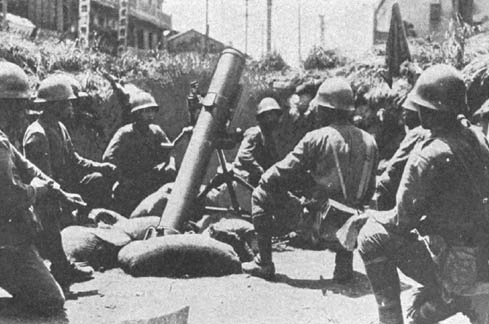
| Year | 1936 (Type 96) 1941 (Type 97) |
| Weapon Type | Heavy Mortar |
| Origin & Designer | [@designer] |
| Numbers Produced | 90 (Type 96) 110 (Type 97) |
| Crew | 7 |
| Calibre | 150mm |
| Elevation | +45° to +80° |
| Traverse | -8° to +8° (Type 97) |
| Cartridge Weight | [@cartridge_weight] |
| Round Weight | 25.88 kg |
| Barrel Length | 1.325mm (Type 96) 1.395mm (Type 97 Short) 1.935mm (Type 97 Long) |
| Overall Length | [@length] |
| Grenade Types | [@grenade_types] |
| Mount | [@mount] |
| Combat Weight | 722 kg (Type 96) 232 kg (Type 97 Short) 342 kg (Type 97 Long) |
| Operation | [@operation] |
| Cooling System | [@cooling] |
| Sights | [@sights] |
| Feed | [@feed] |
| Practical Rate of Fire | [@practical_rate_of_fire] |
| Maximum Rate of Fire | [@maximum_rate_of_fire] |
| Blank Cartridge | [@blank_cartridge] |
| Muzzle Velocity | 214 m/s |
| Fuel Capacity | [@fuel_capacity] |
| Minimum Range | [@minimum_range] |
| Effective Range | [@effective_range] |
| Maximum Range | 3.900m |
| Armour Penetration | [@armour_penetration] |
| Bayonet | [@bayonet] |
| Traction | [@traction] |
| Variants | [@variants] |
| Notes | The Japanese developed a number of heavy mortars and these were only built in small numbers. In the 150mm class they had two weapons, the type 96 and type 97. Both were heavy bombardment weapons and were emplaced in prepared positions and fired by a lanyard. The type 96 was used in China and some saw action on Iwo Jima. The type 97 was a modified version of the type 96 and was lightened by the removal of the heavy recoil system and came in two variants, with both long and short barrels. |